June 18, 2025 | 04:38 GMT +7
June 18, 2025 | 04:38 GMT +7
Hotline: 0913.378.918
June 18, 2025 | 04:38 GMT +7
Hotline: 0913.378.918

Lobster farmers in Cam Binh commune said that about a month ago, the breed they bought was suspected to be of poor quality, so they lost a lot of stock. Photo: KS.
Khanh Hoa is one of the largest lobster farming provinces in Vietnam, mainly concentrated in the Van Phong Bay (Van Ninh district) and Cam Ranh Bay (Cam Ranh City). The breeding involves two types of lobsters: green lobsters and cotton lobsters. The source of lobster breeds depends entirely on imports, as the natural lobster stock in the country is depleted.
During times of abundance, green lobster breeds are sold at prices ranging from 20-30 thousand dong per lobster. However, from October to January, when the imported lobster breeds become scarce, prices can increase to 50-60 thousand dong per lobster. Cotton lobsters, generally priced higher, fluctuate between 100-110 thousand dong per lobster. Due to a halt in China's import of cotton lobsters, the prices have dropped to 30-32 thousand dong per lobster.
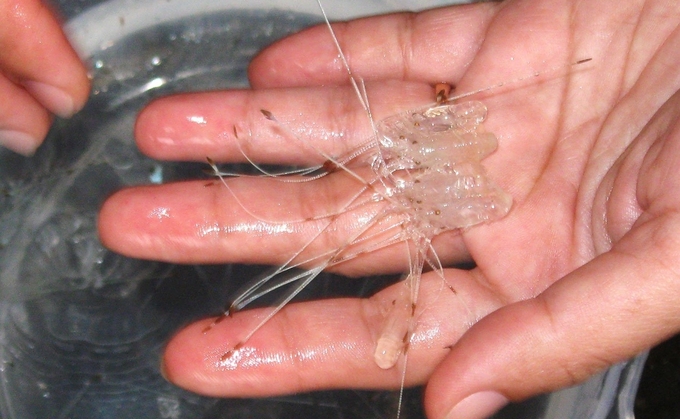
Currently, wild-exploited lobster varieties are exhausted, so we mainly rely on imported sources. Photo: KS.
In Cam Binh commune, Cam Ranh City, one of the main lobster farming areas in Khanh Hoa province, individuals predominantly breed green lobsters. The breeding period is relatively short, with harvests occurring within 8-10 months, and the lobsters reaching a weight of about 3-4 lobsters per kilogram.
According to local reports, recent batches of lobster breeds purchased in September and October have experienced higher mortality rates than usual, with some nearly wiped out. Farmers emphasize the need for high-quality lobster breeds, especially as they adopt year-round breeding practices.
The losses are not limited to mortality during the molting process; some lobsters fail to molt properly during the second or third molting, leading to gradual and persistent deaths. The local farmers have been advised to be cautious in resuming breeding activities to avoid further losses and to prioritize purchasing high-quality breeds from reliable sources.
The Chairman of the Farmers' Association in Cam Binh commune, Cam Ranh City, confirms the issues with the recent lobster breeds. The Association encourages farmers to invest in quality breeds with clear origins to ensure successful breeding and minimize losses.
Not only in Cam Binh commune but also in Van Phong Bay, those cultivating cotton lobsters are facing setbacks, suspecting that the quality of the lobster breeds is not guaranteed.
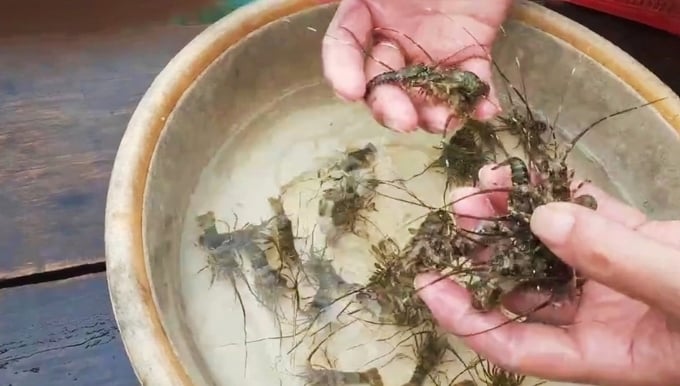
Mr. Nguyen Van Hau, Binh Ba Tay village, Cam Binh commune, said that in the last batch of shrimp released in September and October, most people in the commune lost a lot, and even all the shrimp died. Photo: KS.
Mr. Tran Minh Hien, the head of the lobster farming cooperative in Khai Luong village, Van Thanh commune, Van Ninh district, shared that nearly a month ago when cheap cotton lobster breeds were available at only 17-18 thousand dong per lobster, many locals bought them for breeding. Mr. Hien's family alone purchased 5,000 lobsters, but as of now, the stock has dwindled to only 1,100 - 1,200 lobsters.
According to Mr. Tran Minh Hien, not only his family but many others who bought this batch of lobster breeds are facing similar losses. He suspects that the poor quality of the lobster breeds is the reason for the substantial decline in stocks compared to previous experiences.
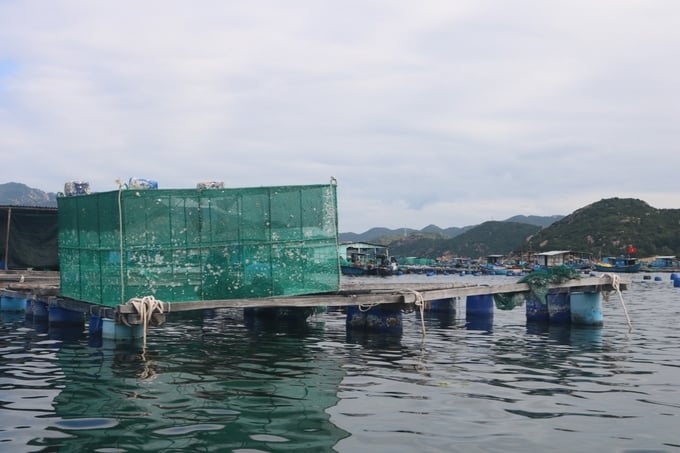
Lobster farming area on Binh Ba island, Cam Binh commune. Photo: KS.
So, where were these breeds purchased? Local farmers reveal that they obtained them from suppliers in Cam Ranh City, considered to be imported from Indonesia, the Philippines, and Myanmar. When the breeds are available, the suppliers call the farmers. After negotiating the price, they pack and deliver the breeds to the farmers. The sellers provide a one-day warranty for the breeds. During this period, if any lobsters die, farmers need to take pictures and send them via Zalo to the seller for a refund.
As a result, for the recent batch of lobster breeds, most of the cultivated lobsters died after the warranty period, leading to frustration among the farmers.
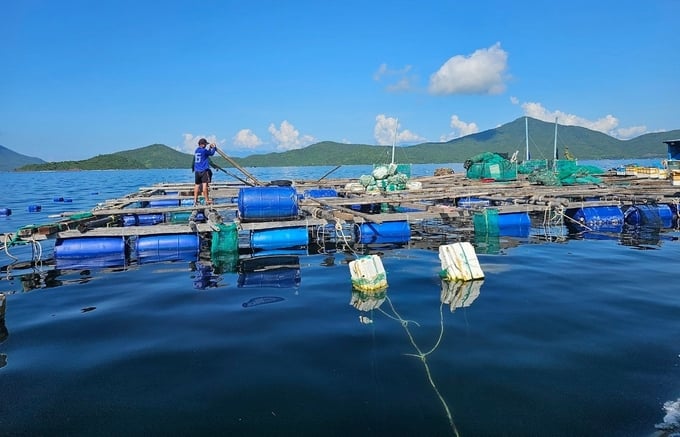
Lobster farming area in Van Thanh commune, Van Ninh district. Photo: KS.
Mr. Vo Tan Phong, the Chairman of the Farmers' Association in Van Thanh commune, stated that the current lobster breeds for farming mainly depend on imports. While breeds with good resistance usually achieve a success rate of 70-80%, from October until now, whether due to weather conditions or the availability of cheap breeds, many farming attempts have suffered significant losses. "Out of 10 farmers, around 8 households are experiencing a 30-40% loss in lobster breeds," said Mr. Phong. It is known that Van Ninh district has approximately 35,000 lobster farming cages, mainly concentrated in Van Thanh commune.
Translated by Linh Linh
/2025/06/17/2344-1-131758_261.jpg)
(VAN) Amid tariff risks and growing trade barriers in the U.S. market, Australia is emerging as a promising destination to sustain the growth momentum of Vietnam's shrimp exports.
/2025/06/17/2013-1-nongnghiep-112009.jpg)
(VAN) This notable growth trend reflects the global taste for fresh, nutritious fruits and the expanding use of lychees across various sectors.
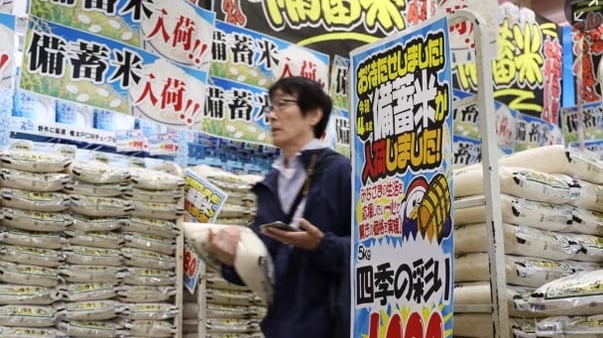
(VAN) The political and cultural insulation of Japan’s beloved grain is falling apart, and experts warn the country’s relationship with the staple will have to adapt.

(VAN) Noting risks, report examines impacts of avian influenza, changing trade patterns since 2022, fish fraud, and shipping industry’s net-zero goals.

(VAN) Mr. Tran Quang Bao, General Director of the Forestry and Forest Protection Department, met and worked with the International Wood Products Association to promote cooperation in the field of timber trade.

(VAN) China's outbound shipments of rare earths in May jumped 23% on the month to their highest in a year, though Beijing's export curbs on some of the critical minerals halted some overseas sales.
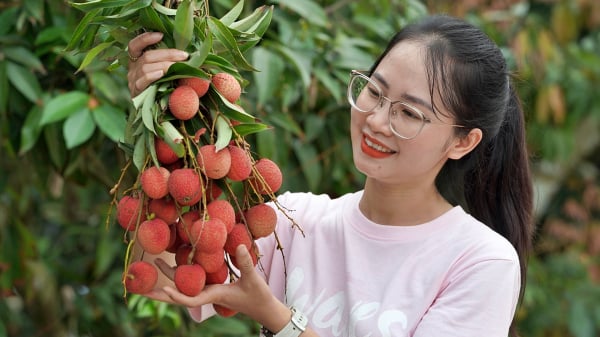
(VAN) To sustain capital flow, administrative reform alone is not enough; what farmers truly need is an ecosystem where both government and businesses grow together in support.